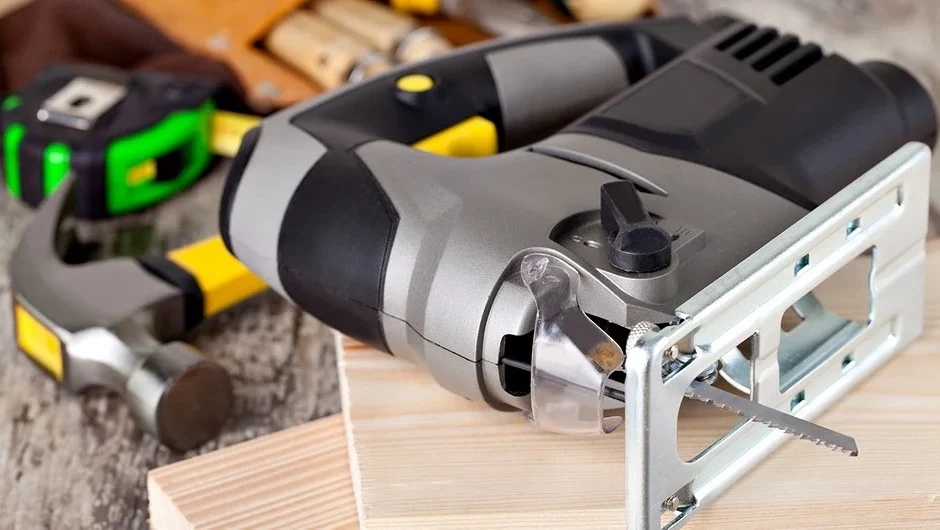We reveal professional tricks on how to cut wood and metal smoothly. Using a jig saw they process wooden, plastic, and metal workpieces. But at first, it’s not always possible to make even cuts. Let’s figure out how to cut smoothly and accurately with a jigsaw.
Tool Features
A jig saw is a device for sawing various materials by reciprocating the saw blade. The cutting element receives vertical reciprocating movements from the electric motor. This is how cuts are made in the workpiece. Some models are additionally equipped with a pendulum stroke, which allows the saw to simultaneously move not only up and down, but also back and forth. This speeds up the cutting process.
The design of the tool includes a frame, a body, and a file with a mechanism for its fastening. The bed is the base on which the remaining elements are fixed. It should be smooth, massive, and durable. The accuracy of the direction of the cutting unit and its vibration depend on this. The housing contains all equipment components. It is manufactured in two versions: with an “iron” or arched handle. The user selects the most convenient variety for himself.
The mechanism for fastening the cutting element is “responsible” for the reliability of fixation, the accuracy of direction, and the absence of backlash. Jig saws are equipped with additional equipment that helps to make an even cut. These are a guide rail, a lateral parallel stop, and an anti-splinter liner. A compass stop is useful for cutting out circles.
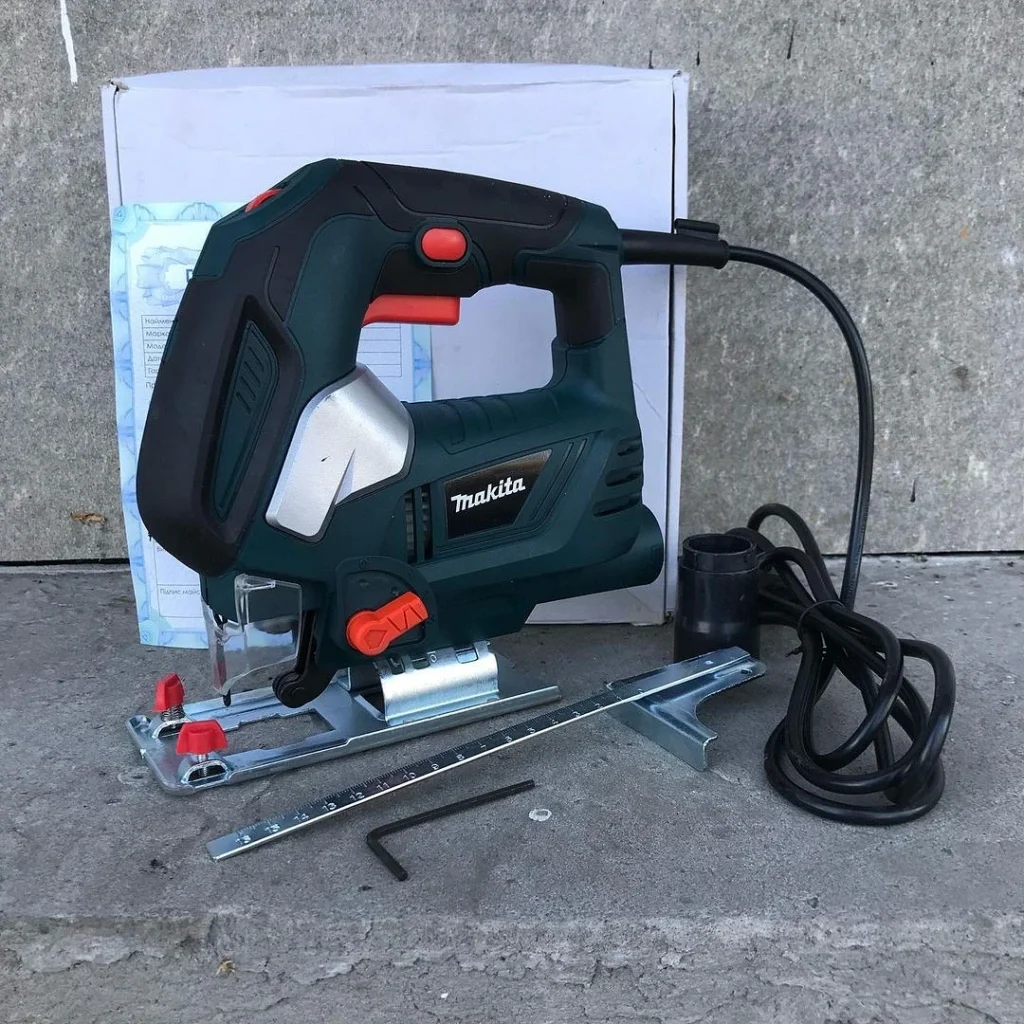
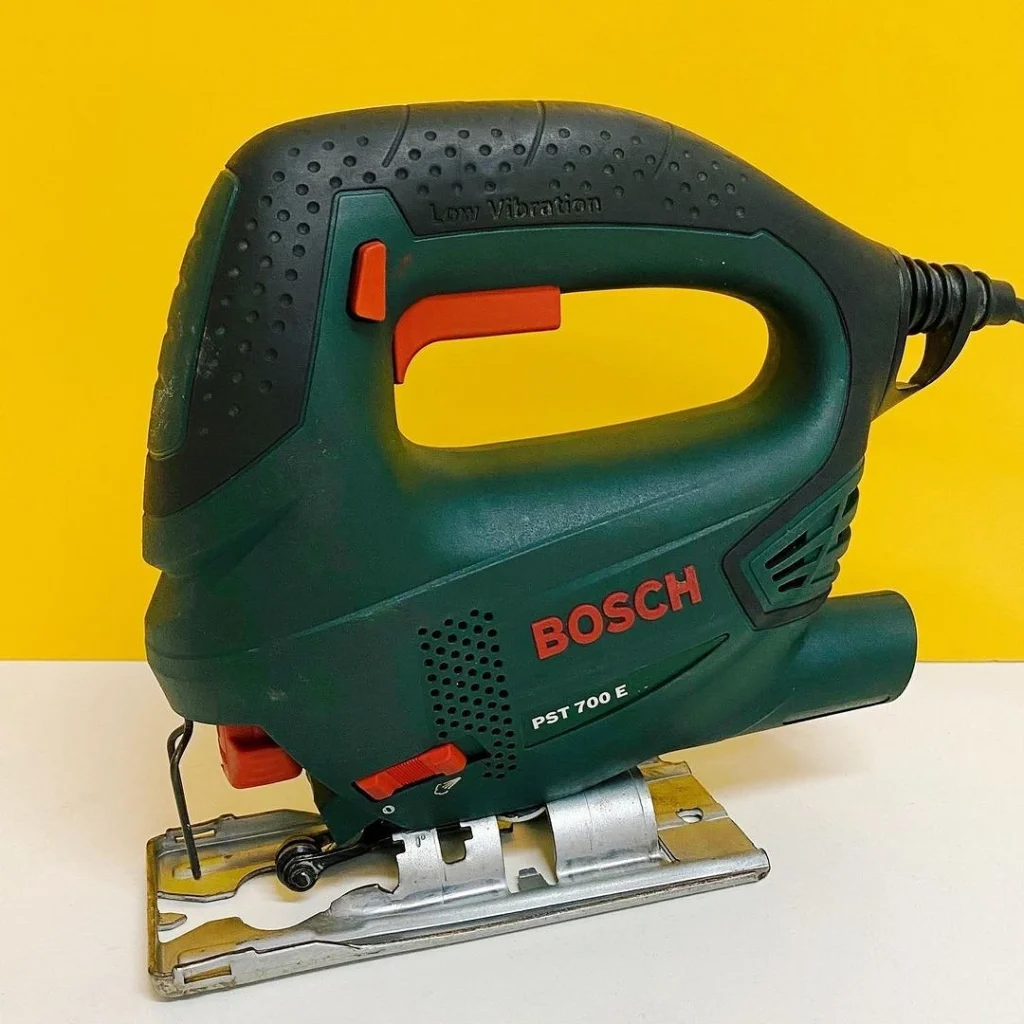
What affects cutting accuracy
To ensure an even cut, you need to select an electrical device suitable for the material being processed. Let’s list what needs to be taken into account.
- Equipment power. The higher it is, the less effort is applied when cutting. Vibration is reduced, and the risk of the file bending and moving to the sides is reduced.
- Number of revolutions or stroke rate. For hard metal, for example, steel, choose low values, for softwood – high.
- File length. The wider the workpiece, the longer the blade should be. The discrepancy between these dimensions provokes vibration, the peak operating mode of the device. The seam often breaks – uneven edges and chips are formed, and its width increases.
- Blade thickness. Determines its hardness. The thicker the element, the better it maintains perpendicularity relative to the workpiece, the quality of the cut increases, and the risk of “moving to the side” is reduced.
- Blade width. The wider the part, the easier it is to maintain the cutting direction. Wide plates are used for sawing in a straight line, narrow plates are used for curved cuts.
- Teeth pitch. Selected according to the type of material. For example, a step of up to 1 mm is intended for metal, within 2-3 mm – for furniture panels, laminate, or parquet boards, and within 3-6 mm – for rough processing of wood.
Blade material may vary. This affects its rigidity, strength, and tooth sharpness. They produce files with different characteristics for working on metal, wood, ceramics, and plastic.
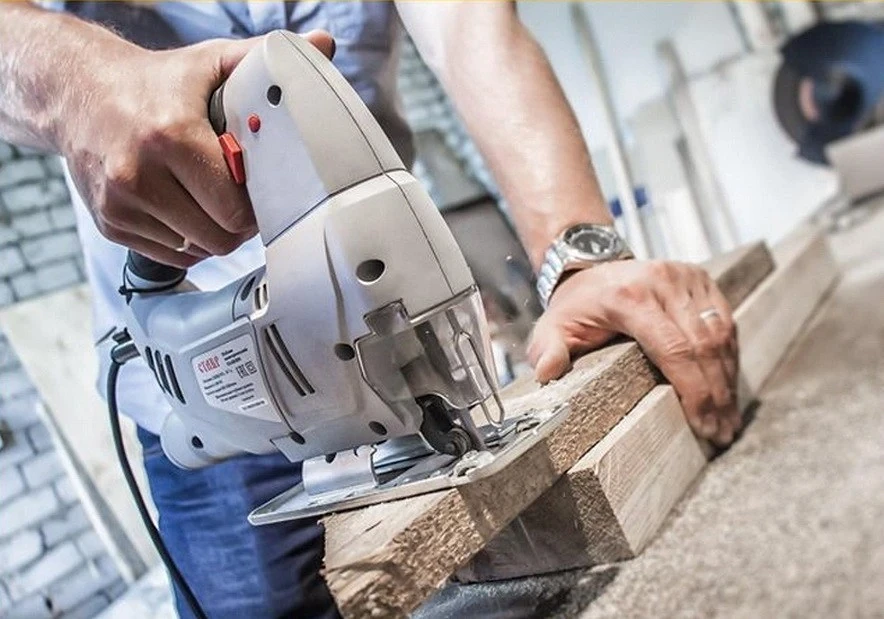
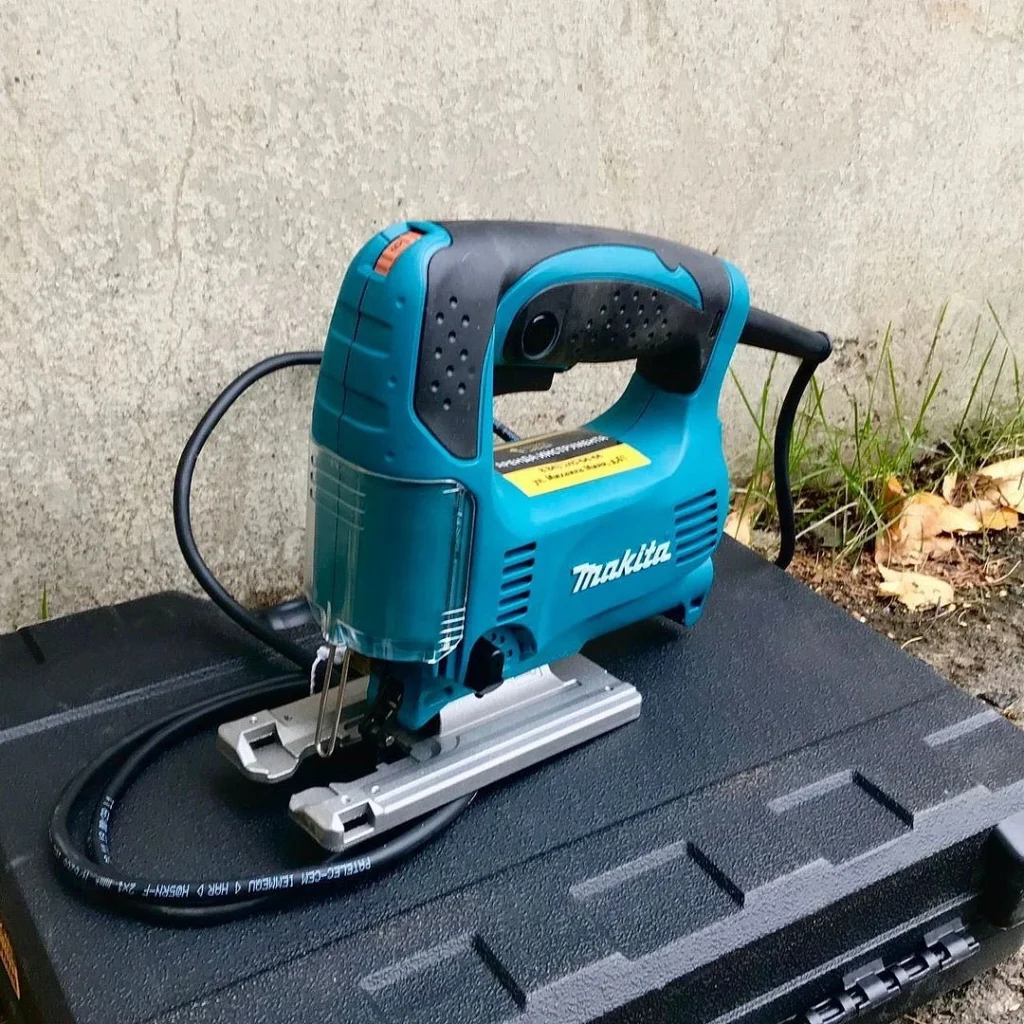
How to make a jig saw cut straight
The sawing process consists of several stages, we list them below.
- Select a blade of the required length, thickness, and width. Correlate it with the size and material of the workpiece.
- Select and configure the working stroke. Determine the need for a pendulum stroke. If high speed is required, it is left. To ensure a clean cut, it is turned off.
- Select and, if necessary, install additional equipment.
- Preparing the workplace. A strong, stable stand is required. Its surface should be smooth.
- Mark the cutting line. It is best to use a black marker, it is visible. This is what they do if they can leave traces. Otherwise, use a simple pencil. It can be easily erased with an eraser.
- The workpiece is fixed on a stand. It must be firmly fixed, without the possibility of movement to the sides. If the part does not completely fit on the surface, supports are installed under the hanging part. Otherwise, it will interfere with sawing.
- They saw the workpiece according to the markings.
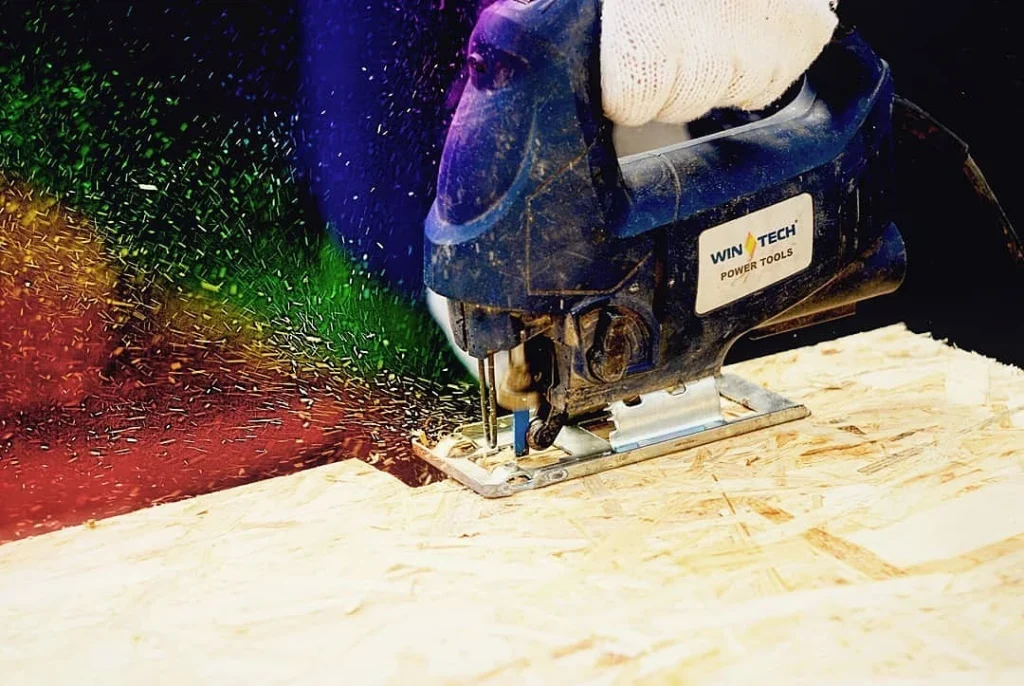
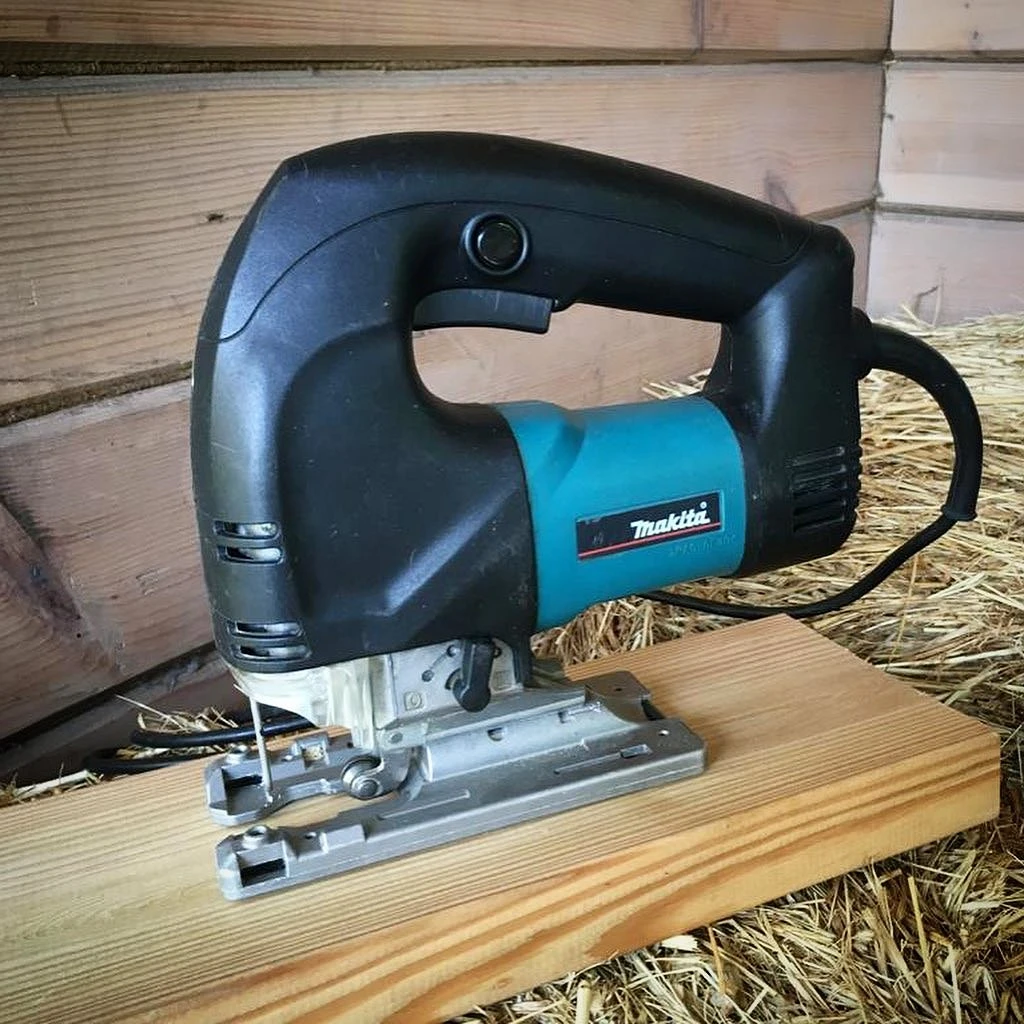
The sawing process differs slightly depending on the material being processed. Let’s figure out how to cut correctly and evenly with a jig saw.
Wood
The switched-on jig saw is placed on the surface of the part so that the front part of the sole fits tightly to the base. A loose fit at the beginning of a cut can cause shock and severe vibration. As a result, the blade will move to the side. It’s good if there is a “Soft start” function. Then the electric motor will smoothly pick up speed, which will eliminate jerking. There is no need to put pressure on the tool, it should move on its own. It will be slow, but sure.
The user needs to control the relationship between the marking and the cutting point. Illumination or a laser beam, as well as blowing, can help with this. Sawdust is blown away from the marking; it should be clearly visible. You shouldn’t rely too much on additional equipment. Visual control of the process must be constant.
For a smooth side of the part to be cut, it is advisable to use a side stop. It is best to see wood along the grain with the pendulum stroke turned on. This reduces the risk of the saw leaving the path and increases the speed of work. Semi-finished products from softwood of large thickness, over 45-60 mm, are sawed at a minimum longitudinal feed. This reduces the risk of curvature of the cutting plane. At increased pressure, an inclined cut is obtained, which is undesirable.
They work similarly with glued products and hardwood, and in this case, the recommendations are valid for a smaller thickness of the workpiece. Cutting resistance may increase during sawing. This means that the cutting unit has become dull and needs to be replaced. Other signs of a dull tool include discoloration and heating.
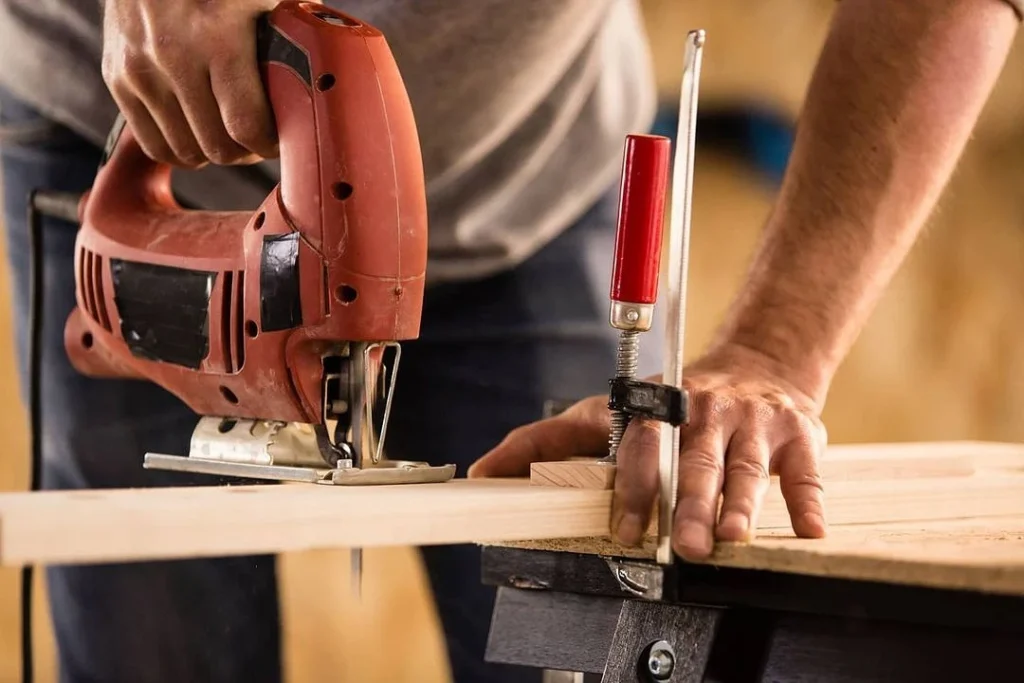
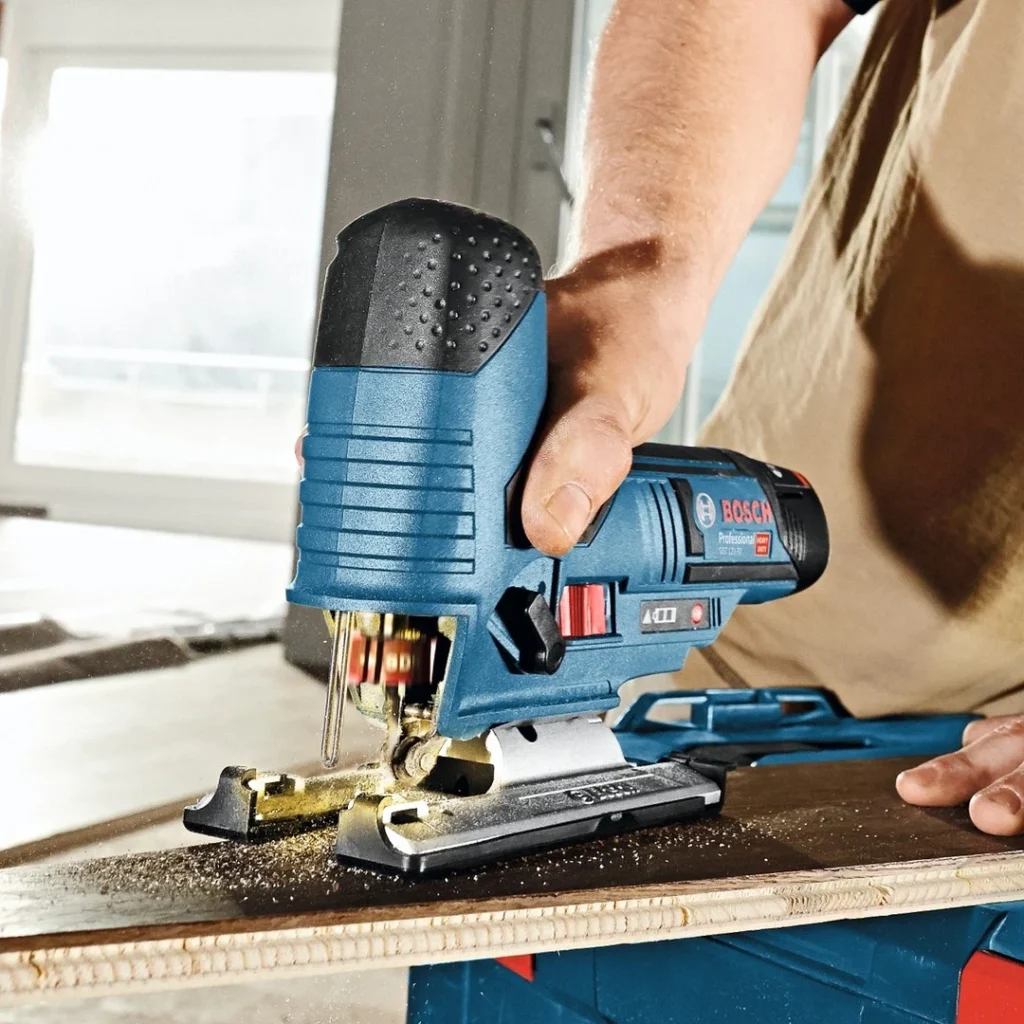
Metal
You should not use a jig saw to process metal sheets with a thickness of more than 10-12 mm. For work, choose a special metal file with fine teeth.
The pendulum mechanism is turned off, and the minimum stroke frequency is selected. If the workpiece is very thin, up to 2-5 mm inclusive, it is best to fix it between two fiberboard plates. This will allow you to cut the part smoothly and reduce vibration and rattling. In this case, the cutting line is marked on the wood board.
When cutting, the metal is subjected to significant loads, so it must be securely fixed. But you need to do this in such a way that the blade moves freely vertically. It is easier to cut a metal semi-finished product using a lubricant, it improves sliding. To do this, machine oil is applied drop by drop along the cutting path. Thick plates are cut gradually with mandatory breaks to cool the equipment and the cutting unit.
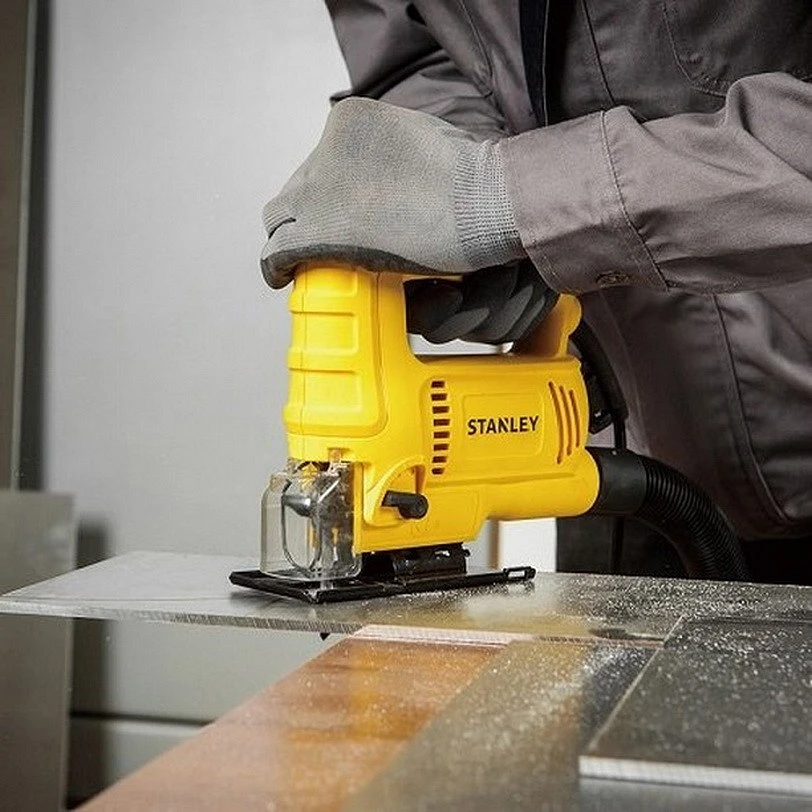
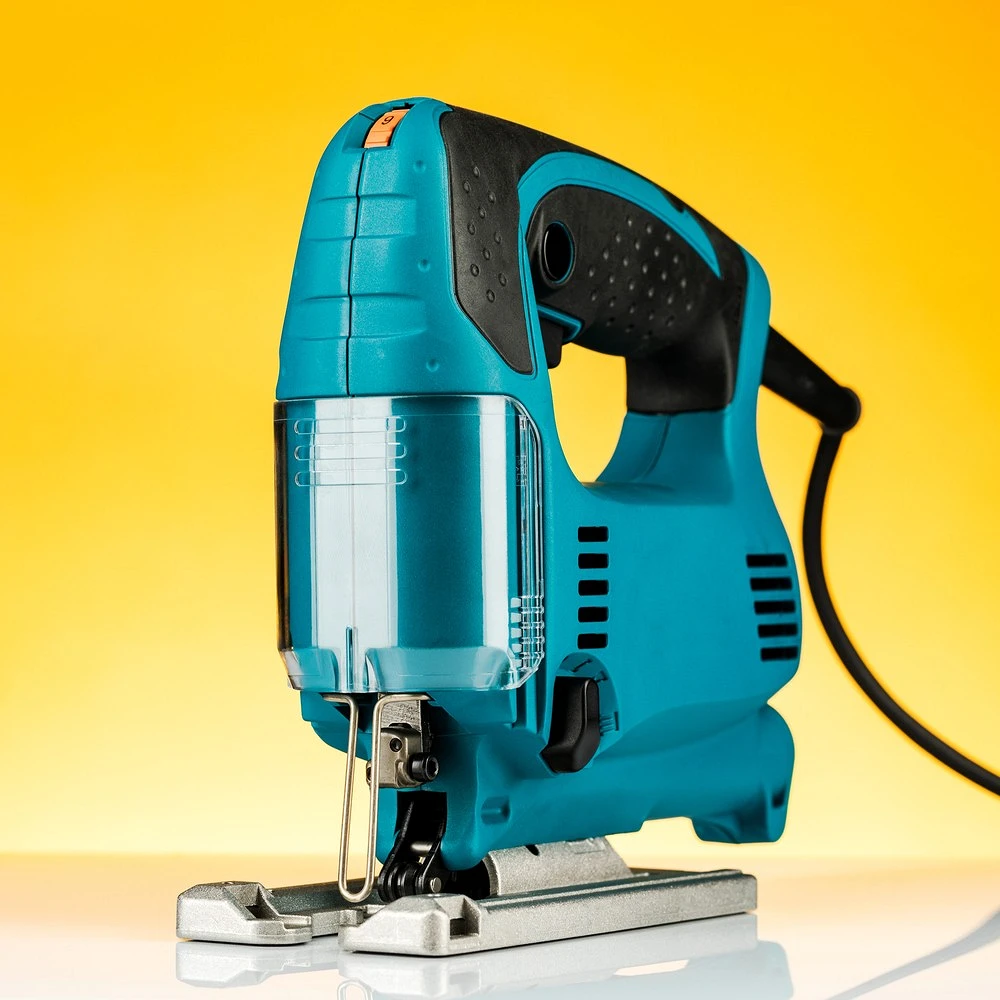
Features of working with hand tools
For cutting, not only power tools are used, but also manual devices. Before processing, the semi-finished product is securely fixed, and markings are applied to its surface. Let’s list the basic rules on how to cut smoothly with a hand jig saw.
- During the cutting process, the tool moves strictly up and down.
- The amplitude of vertical movements should be maximum so that the entire length of the file is used.
- They cut without jerking or sudden movements, very smoothly and slowly.
- Do not put too much pressure on the cutting unit, otherwise the cutting accuracy will suffer. If you need to change direction, use your other hand to carefully move or turn the workpiece.
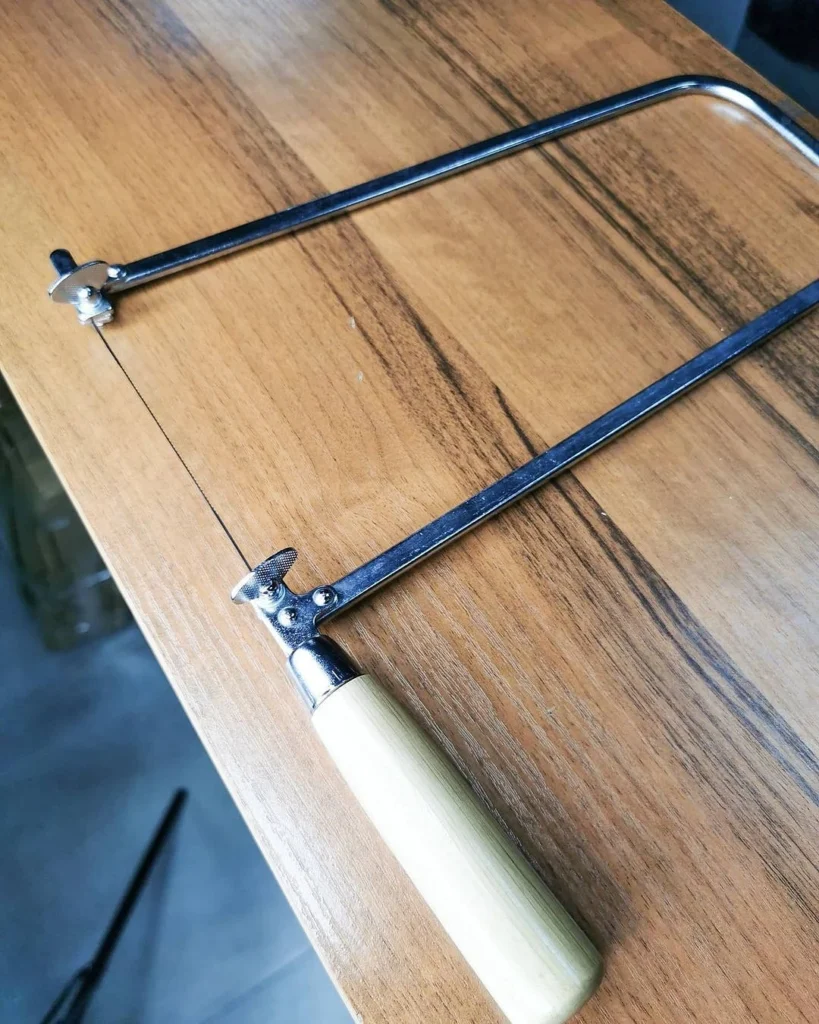
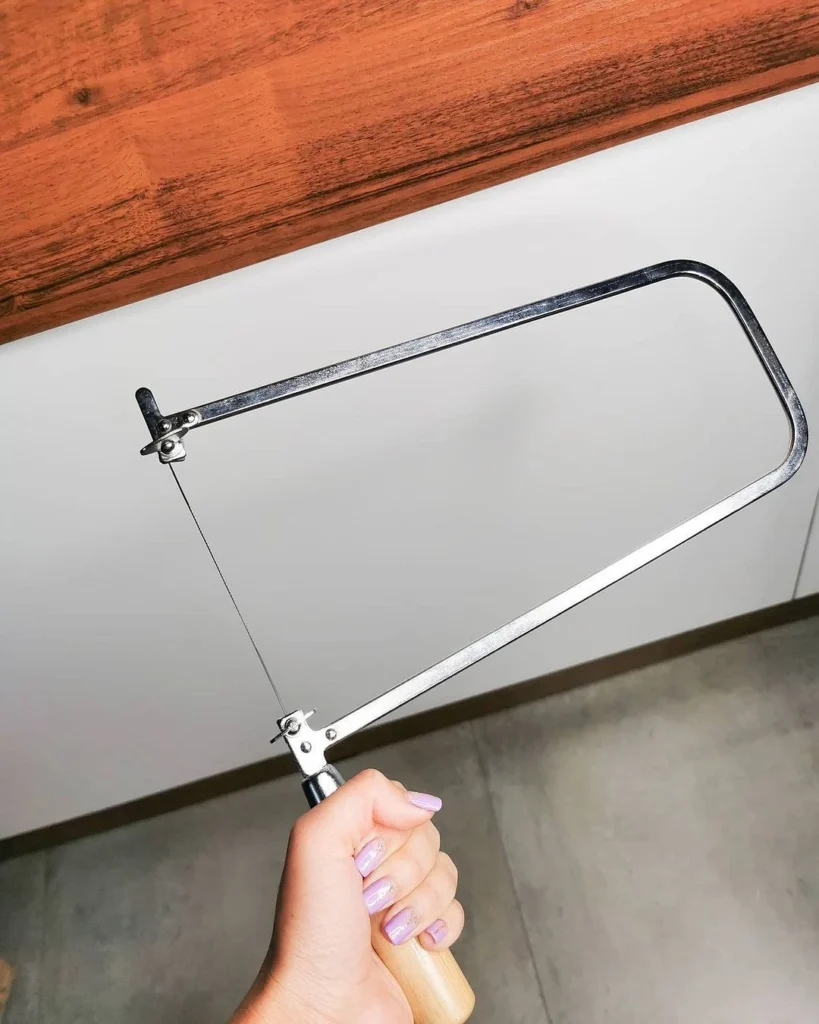
You need to know that cutting is performed only when the blade moves from top to bottom. Therefore, it must be moved back freely, without pressure. Important point. When cutting, the nail file is guided along the inside of the intended contour. It is impossible to cut along the basting line since even a very thin blade will leave a cut of some width. This is especially important if precise adjustment of sawn elements is required.

